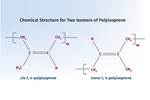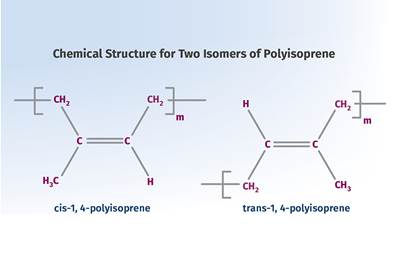Tracing the History of Polymeric Materials: Phenolics
In this installment we discuss the discovery of Bakelite, the first truly synthetic polymer, known today as phenolic.
In 1863, the year after the nitrocellulose-based plastic Parkesine was awarded the bronze medal at the Great International Exhibition in London, Leo Baekeland was born in Belgium. The son of illiterate parents, Baekeland earned his PhD at the age of 21, studying under Theodore Swarts, chief assistant to Friedrich August Kekulé at the University of Bonn, Germany. Kekulé is credited with working out the structure of benzene, a chemical that is central to much of polymer chemistry and closely related to phenol, one of the chemicals that is key to the story of the first truly synthetic polymer. Baekeland was also a photography enthusiast, and during his high school and college years he worked with a local chemist who had established a factory to produce the first photographic dry plates made in Europe.
The early dry plates made use of chemical developers that smelled unpleasant and could be temperamental to work with. Baekeland recognized this and shortly after graduating with his doctorate he invented a dry plate coated with a water-soluble emulsion that could be dipped in water to activate the developer. He obtained a patent for this advancement in Belgium in 1887.
In 1889, Baekeland and his wife traveled to New York, where he met and went to work for Richard Anthony, a principal in a company that made photographic films, papers, and cameras. This was the same company that would purchase the Goodwin Camera and Film Company from Hannibal Goodwin a decade later. Goodwin had developed a workable celluloid film two years before George Eastman (founder of Eastman Kodak), but the issuing of his patent had been delayed for 11 years, resulting in the lawsuit that we discussed in last month’s article.
Baekeland worked for Anthony for two years, and then after an illness and some lean times trying to make a living as an independent consultant, he focused on developing a photographic paper for printing enlargements. In the early history of photography, printing was accomplished with the aid of natural light provided by the sun. Baekeland’s breakthrough, coming after two years of research, produced a paper with the silver chloride emulsion in a colloidal state that was sensitive enough to light to be developed with artificial light, no sunlight required. He named the product Velox.

For most people at this time, the source of the artificial light would have been gaslight. However, the introduction of the electric light by Edison, also a key figure in the celluloid advancements, would soon change this. While professional photographers did not generally embrace this new paper, it became very popular with amateur photographers and created a market that garnered the attention of none other than George Eastman. In 1898, Eastman purchased the company that Baekeland had founded with two partners for $750,000, about $22 million in today’s dollars.
All of these intersections with other major players in the chemical and energy industry simply set the stage for the research that Baekeland was now able to engage in due to his significant financial security. The conditions of the sale of his company to Eastman included a non-compete agreement that prevented Baekeland from engaging in any research on photography for 20 years.
With a chemistry background, a flair for experimentation, a good instinct for identifying unsolved problems, and no need to work for a living, Baekeland established an estate in Yonkers, N.Y., and went to work on a pressing problem that resembled the one that had led to the development of celluloid. Celluloid had been developed to solve a shortage of ivory. The rapid expansion of the electrical industry in the last two decades of the 19th century and continuing into the early 20th century created a new bottleneck in another naturally occurring material, shellac.
Shellac is made by lac beetles when they extract sap from trees and secrete a resin. This is scraped from the trees and processed by heating and filtering to produce the pure compound. It is estimated that over 100,000 lac beetles are required to produce a kilogram (2.2 lb) of shellac. In the pre-electrified era, the low rates associated with traditional shellac production were sufficient to satisfy demand for lacquers and wood product preservatives. But the electrical industry created a huge demand for shellac due to its excellent electrical insulating properties and ability to seal against moisture. Demand increased to an even greater degree when shellac became the preferred material for pressing phonograph records, yet another intersection with Edison’s world. (He had invented the phonograph in 1877.) PVC would replace shellac in this application in the 1940s.
The industrial history of shellac bears a striking resemblance to that of rubber. A natural polymer that could only be derived in small amounts and found primarily in southeast Asia had become a key constraint in the rapid development of technology happening in Europe and North America, far removed from the source. And like natural rubber, shellac lacked some desired performance characteristics. First, it is a thermoplastic, with a melting point of about 75 C (167 F). So, it softens at even moderate temperatures. High-voltage insulators that generate relatively high temperatures will melt shellac. And while it can be blended with fillers like wood flour to make a moldable compound, it has a relatively low surface hardness and applying it can be labor-intensive.
Five years of research by Baekeland resulted in a 1907 patent for “Improvements in Methods of Making Insoluble Condensation Products of Phenols and Formaldehyde.” Baekeland named the product Bakelite, a name that still shows up occasionally in industry literature. A Bakelite Museum was even opened in Somerset, England in 1983 to display the history of products made from Bakelite. While it is now closed and seeking a new home, it still has a website. The reactor that Baekeland designed to produce the resin was named a Bakelizer.
Today the material is known by its more general designation, phenolic. It is a condensation polymer, as the title of the patent suggests, and the nature of this chemical reaction contributed to many of the challenges in making the material. But the result was the first truly synthetic polymer, a material that did not rely on a natural product that was then modified. And it was a thermosetting polymer like vulcanized rubber, but contained no sulfur and displayed much higher strength, stiffness, heat resistance, and long-term durability. It immediately made inroads as an electrical insulator that had better electrical resistance than mica or porcelain, was more heat resistant than shellac, had better impact resistance than glass or ceramic, and possessed excellent resistance to a wide range of acids, alcohols, greases and oils.
Bakelite was the first truly synthetic polymer, a material that did not rely on a natural product that was then modified.
And in a remarkable intersection with celluloid, it was discovered that phenolic had what we today refer to as viscoelastic properties that were similar to those of ivory, making it the ideal material for billiard balls. This accomplished John Wesley Hyatt’s objective of providing a synthetic replacement for ivory. Hyatt had continued to operate his billiard ball company since its founding in 1868, making gradual improvements on his celluloid-based formulations. However, in 1912, he changed to phenolic in recognition of its superior performance.
While Baekeland obtained the patent that launched the commercial development of phenolic, the chemical reaction that produced a prototype of the compound had actually been discovered more than 30 years earlier. Through a series of dead ends and fortunate accidents, the chemistry that employed a reaction between formaldehyde and other organic compounds to produce useful thermosetting materials evolved through the efforts of several talented chemists and inventors. And after the invention, the challenges of commercialization and the inevitable lawsuits followed. We will look at this part of the story in our next installment.
ABOUT THE AUTHOR: Michael Sepe is an independent materials and processing consultant based in Sedona, Ariz., with clients throughout North America, Europe, and Asia. He has more than 45 years of experience in the plastics industry and assists clients with material selection, designing for manufacturability, process optimization, troubleshooting, and failure analysis. Contact: (928) 203-0408 •mike@thematerialanalyst.com
Related Content
How to Optimize Injection Molding of PHA and PHA/PLA Blends
Here are processing guidelines aimed at both getting the PHA resin into the process without degrading it, and reducing residence time at melt temperatures.
Read MorePart 3: The World of Molding Thermosets
Thermosets were the prevalent material in the early history of plastics, but were soon overtaken by thermoplastics in injection molding applications.
Read MoreFirst Quarter Looks Mostly Flat for Resin Prices
Temporary upward blips don't indicate any sustained movement in the near term.
Read MorePrices Up for PE, PP, PS, Flat for PVC, PET
Trajectory is generally flat-to-down for all commodity resins.
Read MoreRead Next
Tracing the History of Polymeric Materials: Celluloid
In this series we’ll delve into a discerning look back into the history of our industry and how we all got here.
Read MoreTracing the History of Polymeric Materials: Celluloid & Film Stock
In this series we delve into a discerning look back into the history of our industry and how we all got here.
Read More












